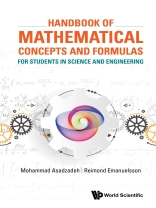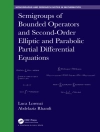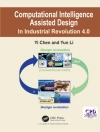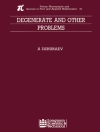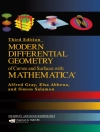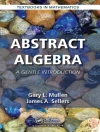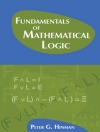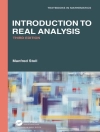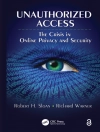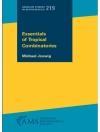This book is a comprehensive collection of the main mathematical concepts, including definitions, theorems, tables, and formulas, that students of science and engineering will encounter in their studies and later careers. Handbook of Mathematical Concepts and Formulas introduces the latest mathematics in an easily accessible format. It familiarizes readers with key mathematical and logical reasoning, providing clear routes to approach questions and problems.
Concepts covered include whole calculus, linear and abstract algebra, as well as analysis, applied math, mathematical statistics, and numerical analysis. The appendices address Mathematica and MATLAB programming, which contain simple programs for educational purposes, alongside more rigorous programs designed to solve problems of more real application.
Contents:
- Elementary Set Theory, Algebra, and Geometry:
- Set Theory
- Elementary Algebra
- Geometry and Trigonometry
- Vector Algebra
- Linear Algebra
- Algebraic Structures
- Logic and Number Theory
- Calculus of One Variable
- Derivatives
- Integral
- Differential Equations
- Numerical Analysis
- Differential Geometry
- Sequence and Series
- Transform Theory
- Complex Analysis
- Multidimensional Analysis
- Vector Analysis
- Topology
- Integration Theory
- Functional Analysis
- Mathematical Statistics
- Appendices:
- Mechanics
- Varia
- Programming Mathematica (Mma)
- The Program Matlab
- Tables:
- Tables
- Key Concepts
Readership: Students in Natural Science and Engineering Programmes at universities, instructors, professionals in industry.
Key Features:
- The current handbooks, although very useful and important texts, contain collections of formulas, theorems and tables, where often analytic treatment and logical reasoning are missing
- It is a blind form, e.g. ’to present the expressions for a’ function and its integral/derivative, with no reasoning ‘at all’. Then, even a misprint may not be discovered by the reader
- It is understandable that it is not possible to cover everything in one volume. In this book we have a rather different strategy, where most concepts/formulas preceded by adequate theory supporting the reader to follow up the concept and be able to have own reasoning
- QR-codes are provided for selected theorems, containing their proofs and some relevant examples
